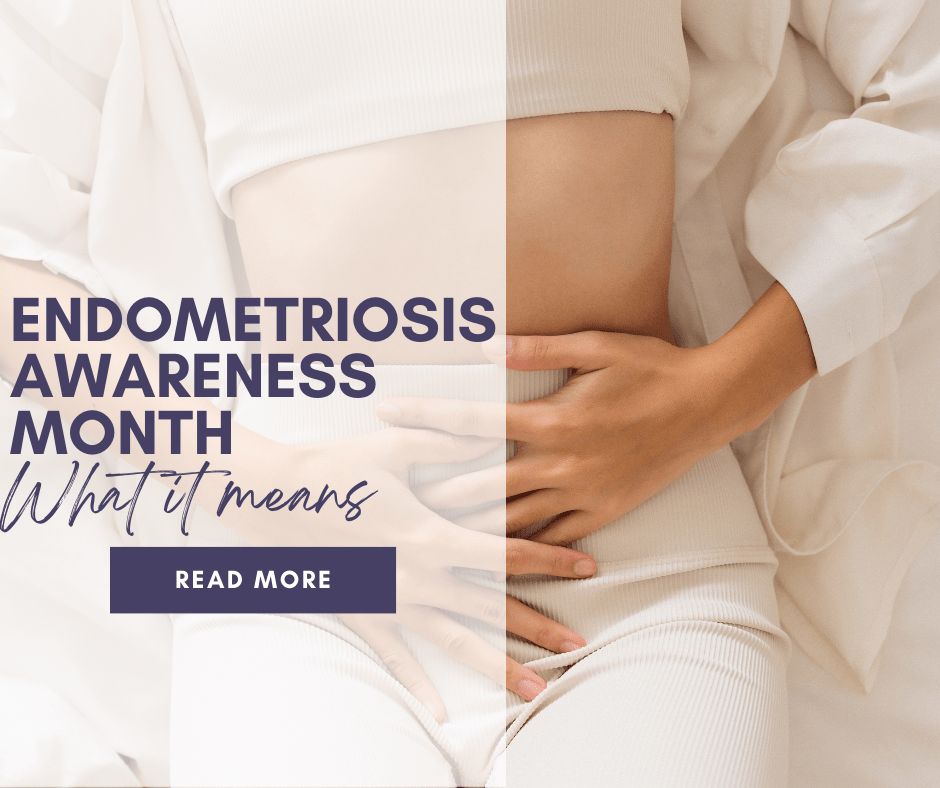Last week, I found myself watching the 18th season of Grey’s Anatomy, both because I have no idea what’s good on TV anymore, and because I’m a masochist. As soon as I heard the plight of the woman on the table, I was able to diagnose her even before Dr. Jo Wilson could page Dr. Carina DeLuca. They’ve had all manner of rare and crazy things wander into the ER on that show – necrotizing fasciitis, Burmese python attacks, Kawasaki Syndrome – but on the 13th episode of the 18th season, they finally covered a disease that affects 11% of women, including myself: endometriosis.
RELATED READING :: Women’s Heart Health
March is Endometriosis Awareness Month. While I had heard of it, and you probably have too, I wasn’t aware of my own endo until I found myself unable to conceive any pregnancy except for an ectopic one without any medical explanation. Sure, I’d had my share of ovarian cyst ruptures and awful pain with my period, but I was repeatedly told these things were “normal”. Our medical establishment often conflates that which is common for normal. Anyone whose kids have brought home pinworms knows they are common, but they certainly aren’t normal.
It wasn’t until a year of peeing on sticks went by that my OBGYN referred me to a reproductive endocrinologist who would ultimately find the reason I hadn’t gotten pregnant yet. You need Fallopian tubes for that, and mine were buried somewhere under scar tissue from such advanced endometriosis that even my skilled surgeon couldn’t find them, all my internal organs were stuck together, adhered with endometrioma glue that had been growing and lurking for years. Lucky enough for us, my conception story had a happy ending. We were told we were great candidates for IVF, and our single embryo became surprise identical twins. But pregnancy didn’t cure my endometriosis (another thing well-meaning but ignorant doctors love to say), and my next major flare-up will result in a total hysterectomy, putting me into menopause in 48 hours. Lucky me.
Hindsight being 20/20, it wasn’t until well after my diagnosis that I realized how often my pain had been minimized, or how often my fertility was prioritized over my quality of life. Every time I went into the ER for crippling abdominal pain, the doctor’s first instinct was to jump to the appendicitis conclusion, even after I explained at length the nature and familiarity of my symptoms. How could I possibly know my own body better than someone with a medical degree? these dismissive (and usually male) doctors seemed to say. Somehow, all these years later and after multiple ablation surgeries, I am still the proud owner of an appendix. It’s hard to believe what you can’t see, and endometriosis is one of those things you can’t see until they cut you open; it doesn’t appear on an ultrasound or a CT scan.
I can’t fault Hollywood for not paying more lip service to a disease that’s so often dismissed as routine period pain. I actually applauded the accurate portrayal of endometriosis in that episode of Grey’s Anatomy, except that the patient in the episode came in for mysterious back pain and discomfort with sex, got a diagnosis in the same visit, and was on the operating table the same day. Meanwhile, the rest of us wait years for a diagnosis – studies show an average delay of 11.7 years in the United States – and months after the onset of unbearable pain for a surgery. It’s still considered elective and non-emergent, after all.
And that’s really all they can do to treat endometriosis – perform surgery every few years, suppress your menstrual cycle with hormonal birth control, and prescribe pain management (when you can find a doctor willing to do so in the midst of an opioid addiction crisis). Even total hysterectomy is not a permanent cure. Despite 1 in 10 women having the disease, the US government allocates less than $1 per patient to research treatment. In short, all signs point to needing more research, new forms of treatment, and better education for all parties involved: advocates, doctors, and patients.
If you have or think you might have endometriosis, there are things you can do.
- Learn the symptoms. This also means learning that the disease does not affect all women the same way. Some stage 1 patients are in pain 24/7, and some stage 4 patients never experience severe pain.
- Track your symptoms. Knowing exactly what symptoms you experience and when is a powerful tool in getting timely diagnosis and treatment. It also means the data doesn’t live in your head, because as busy moms, we don’t need any more data living rent-free in our heads. We’re still trying to remember the last time our kid pooped and what color it was.
- Be your own advocate. Don’t settle for providers glossing over your symptoms, dismissing your pain, or denying you treatment. Find doctors who are knowledgeable about the disease and how to treat it (and if they say “just get pregnant,” run away as fast as you can).
If someone you love has endometriosis, there are things you can do to support them, too.
- Know that at any given time, they might be dealing with (or even hiding) chronic pain.
- Don’t minimize or invalidate their disease. Chronic pain and infertility are isolating enough without dismissive friends.
- Check in on them. A UK study found that 25% of endometriosis patients contemplate suicide at some point. It’s usually the pain talking. Let them know they’re not alone.
For more information about endometriosis and Endometriosis Awareness Month, visit endofound.org.










